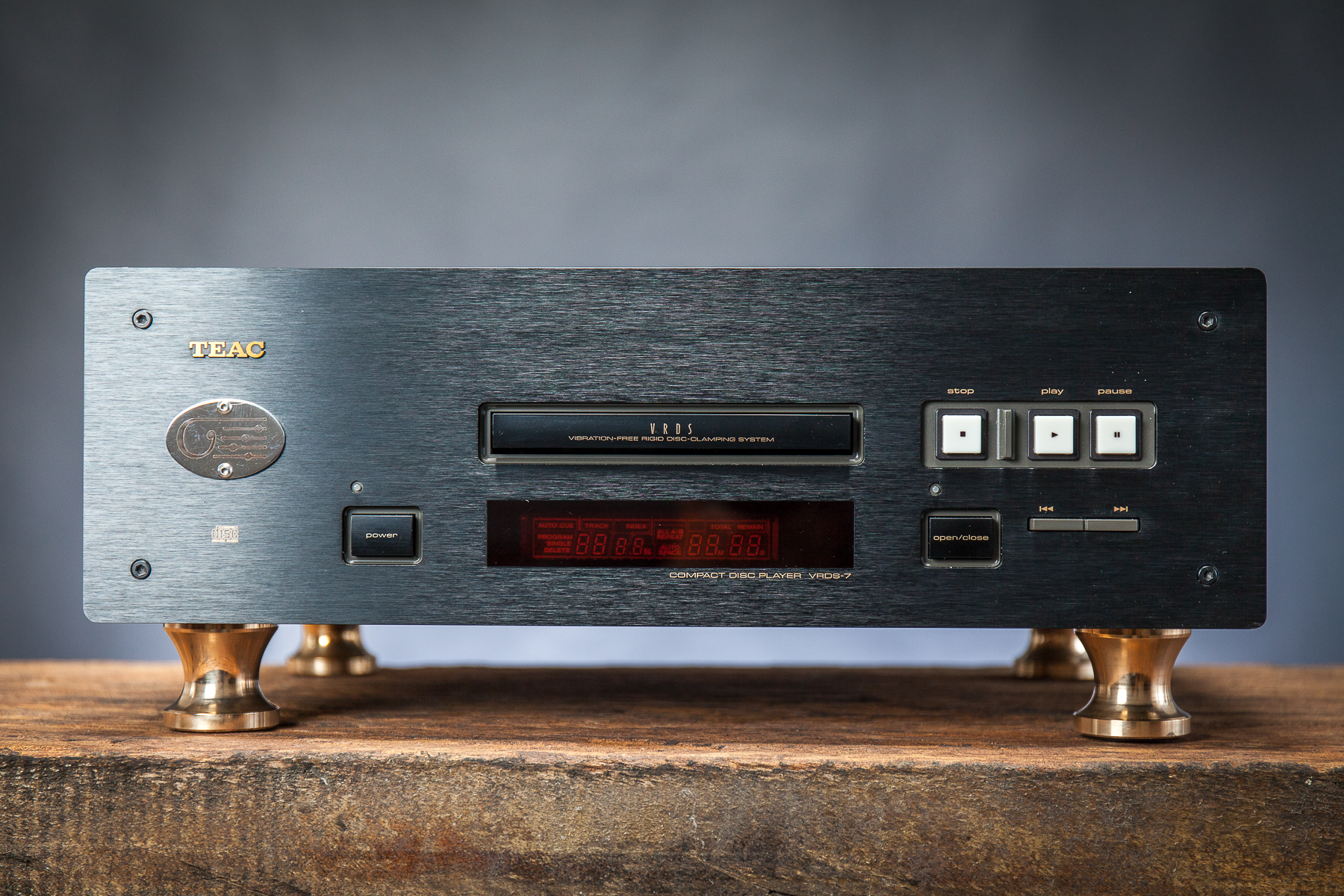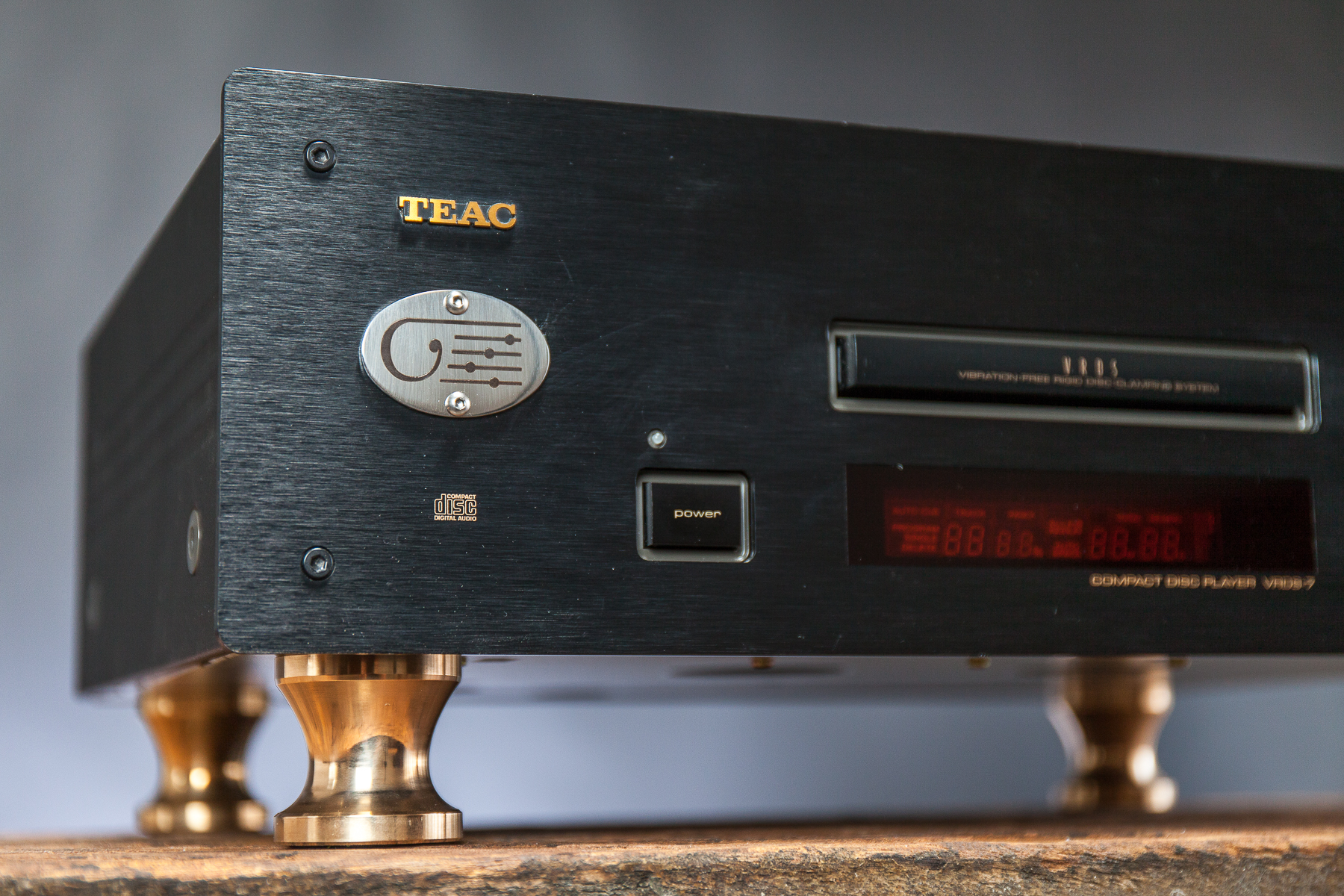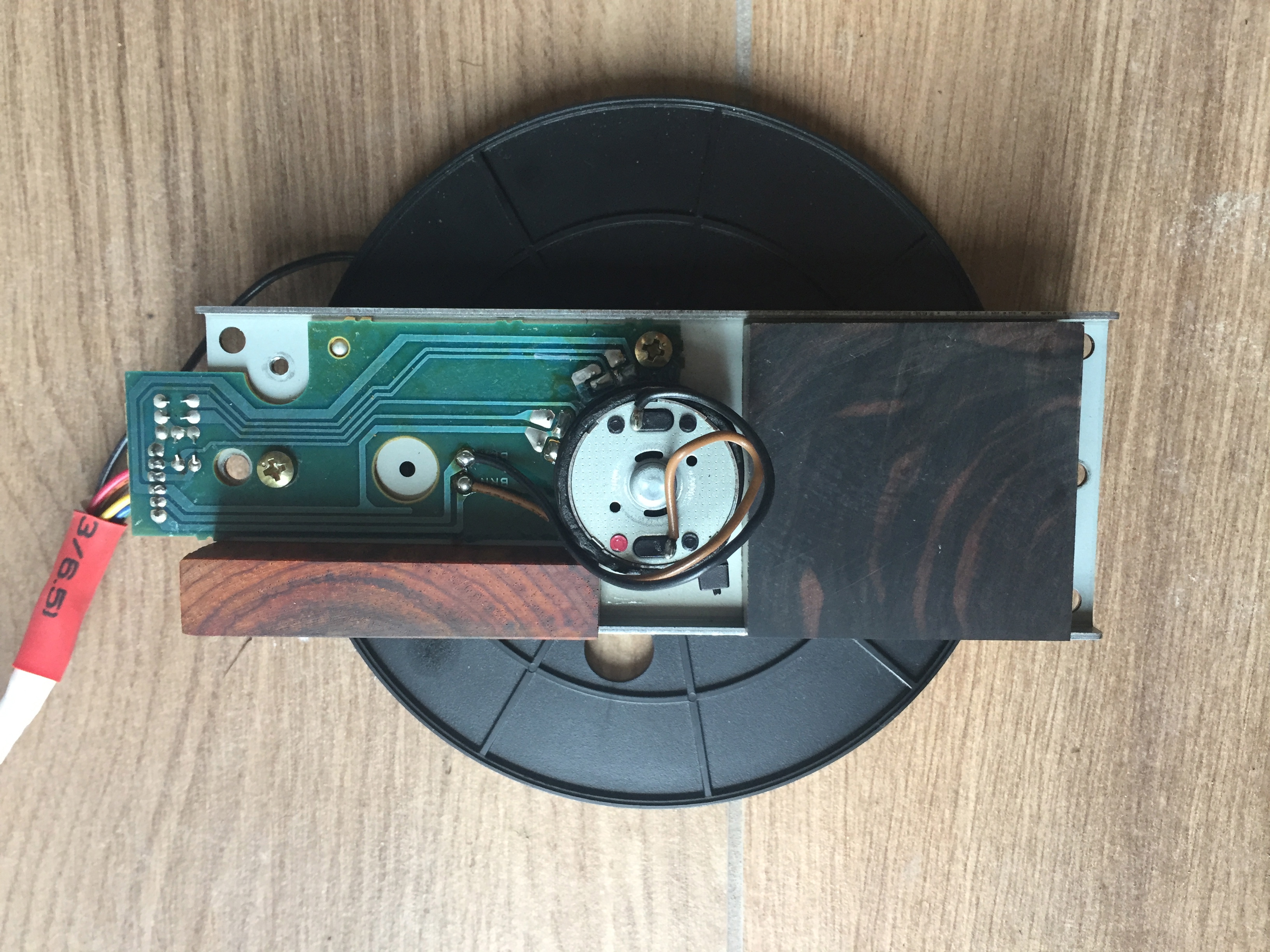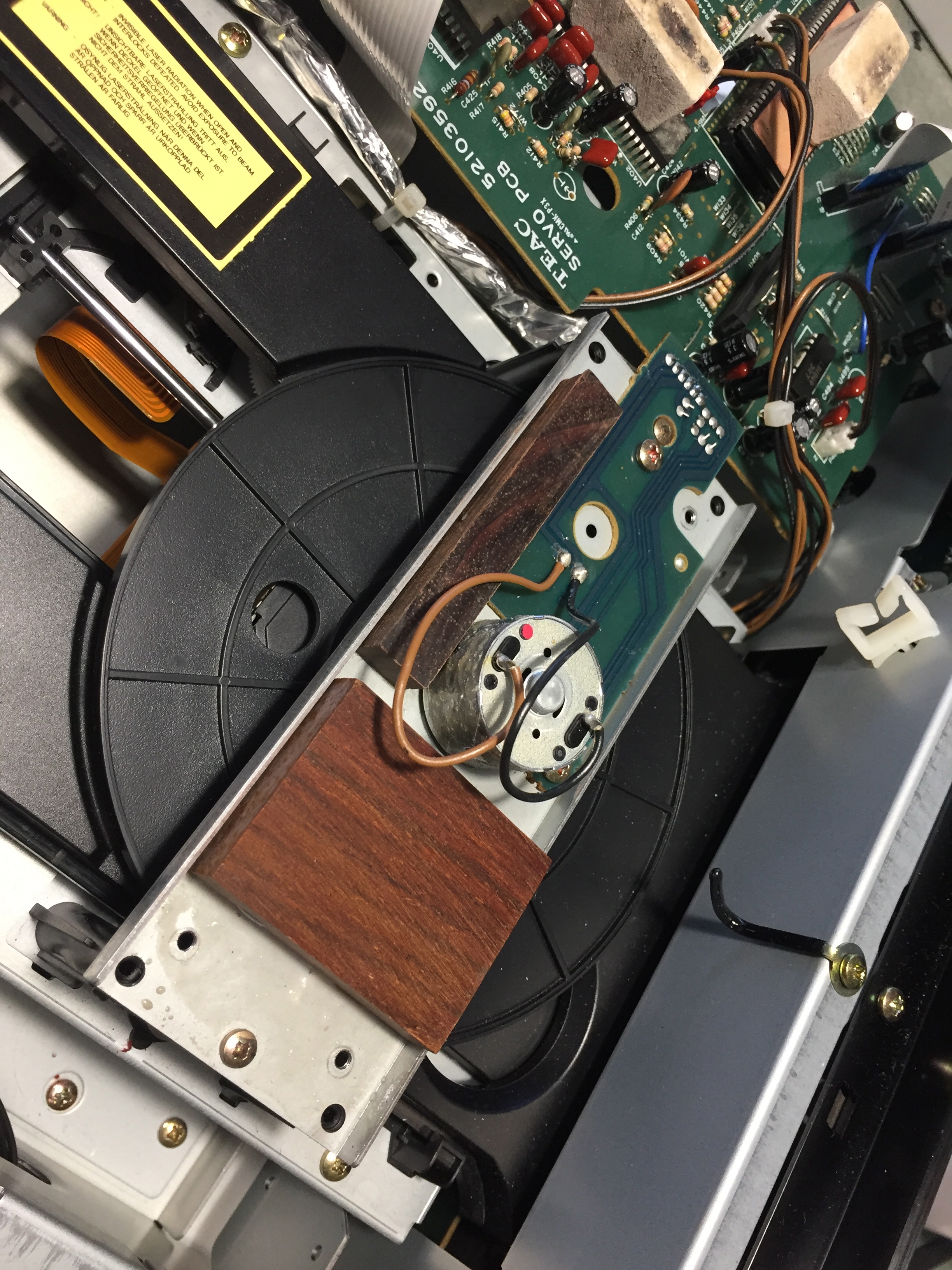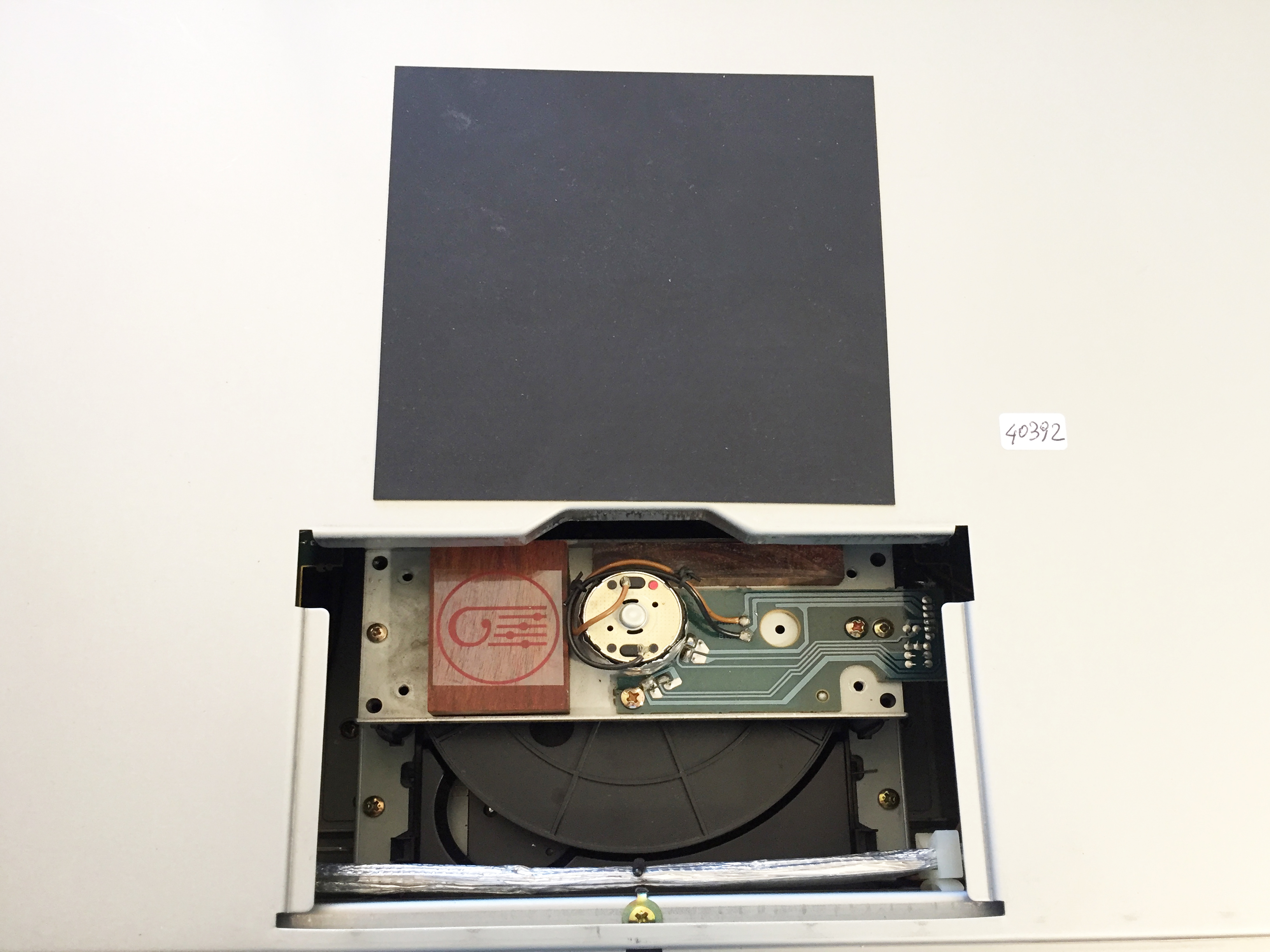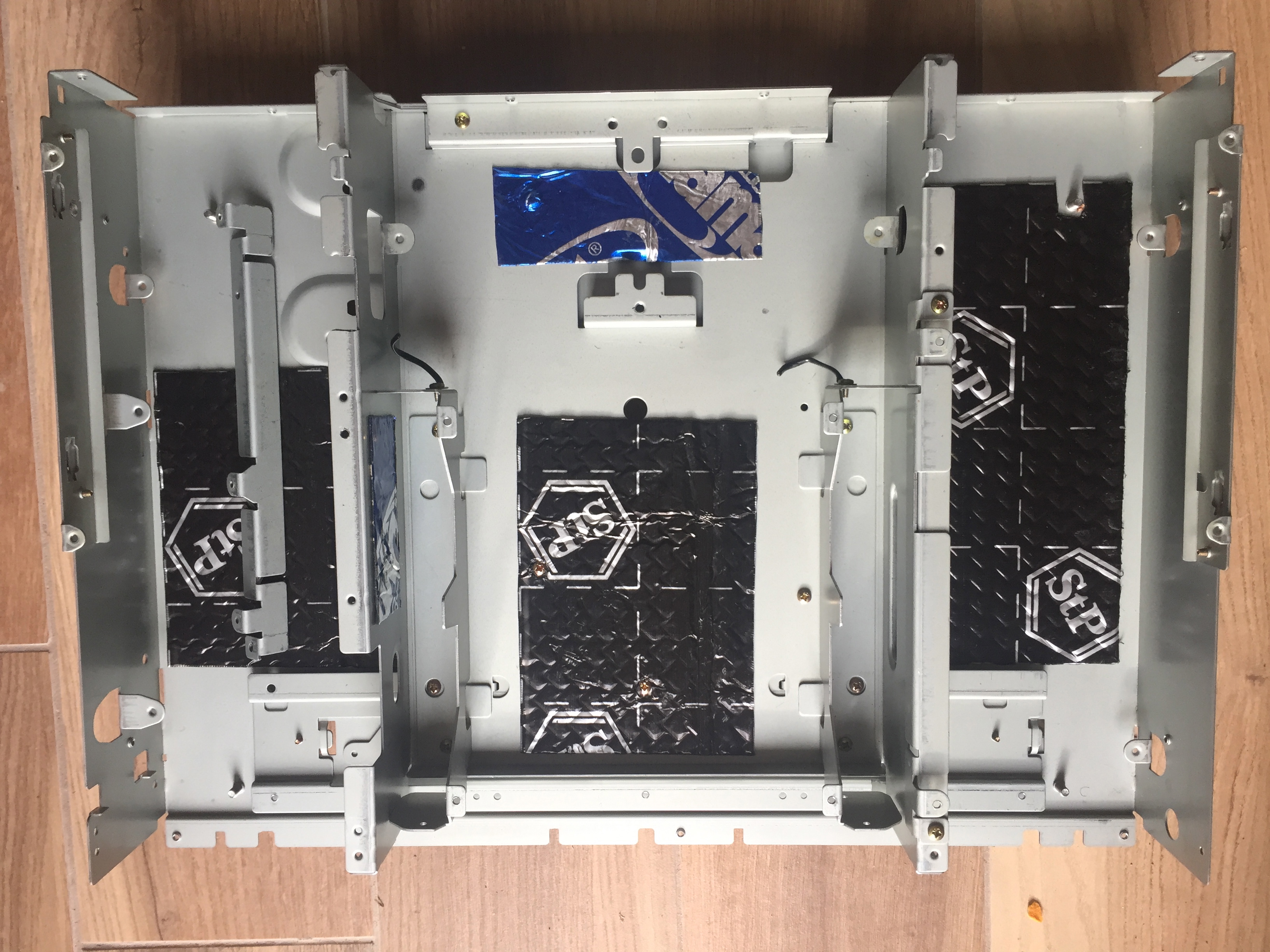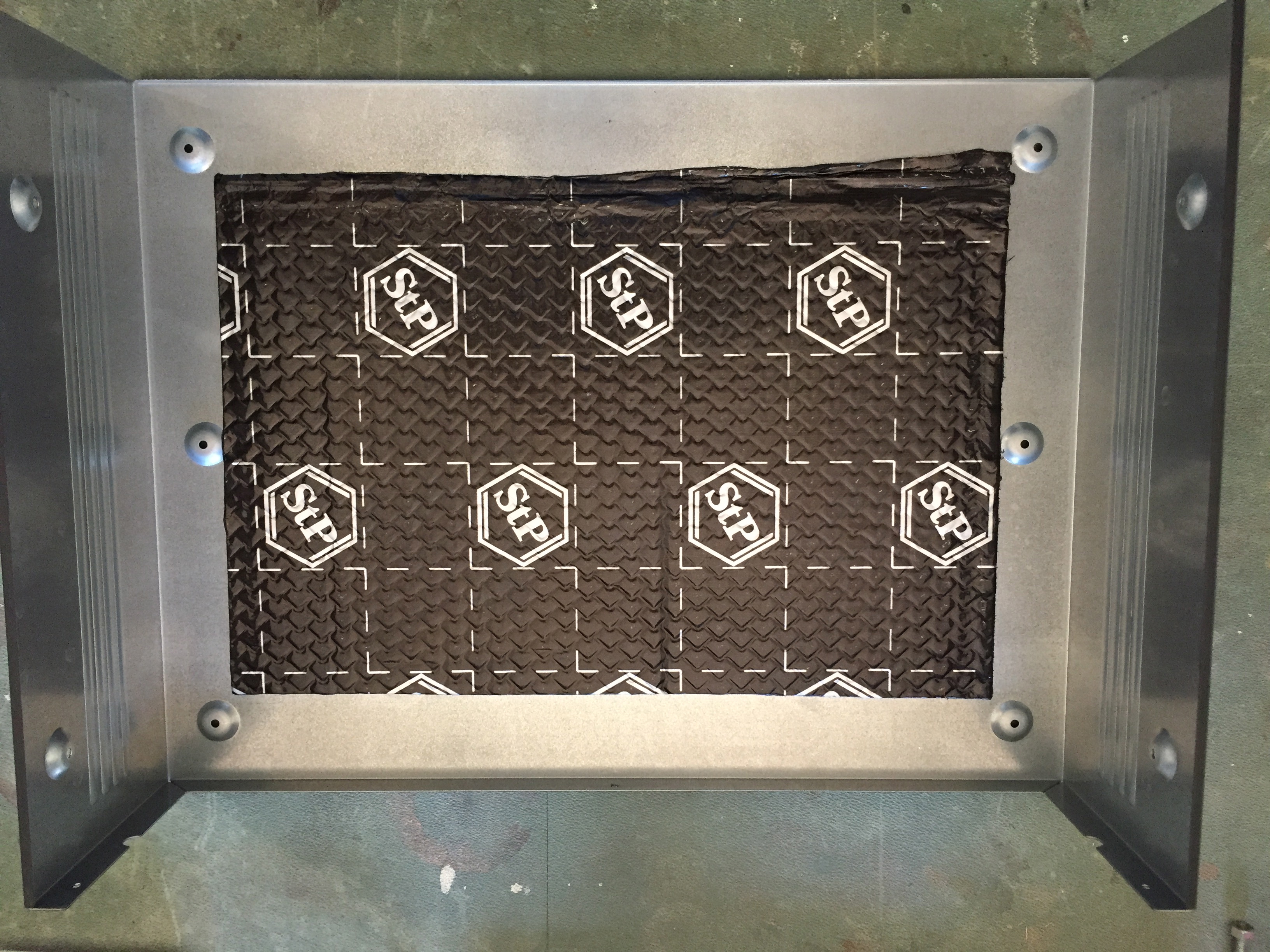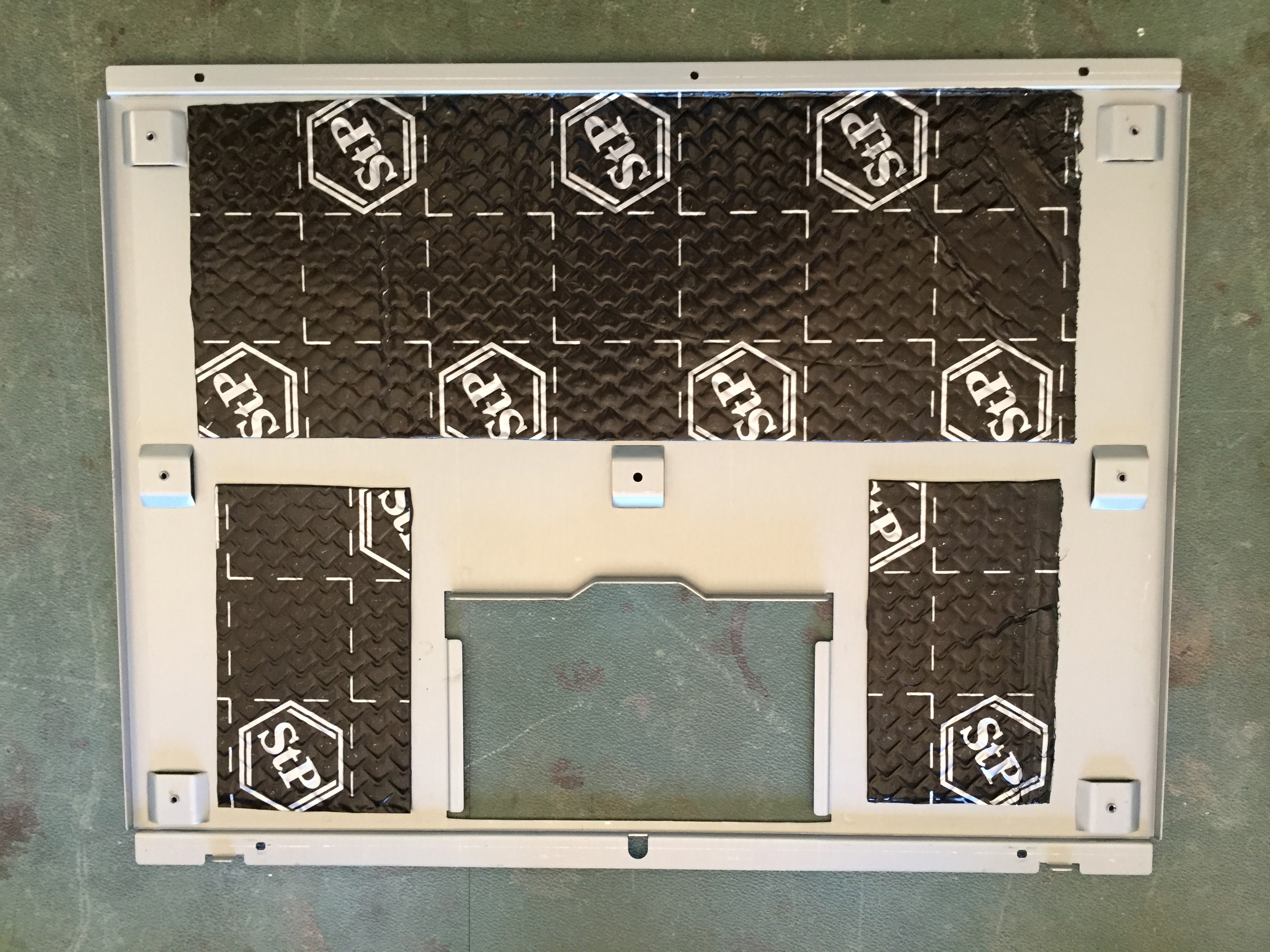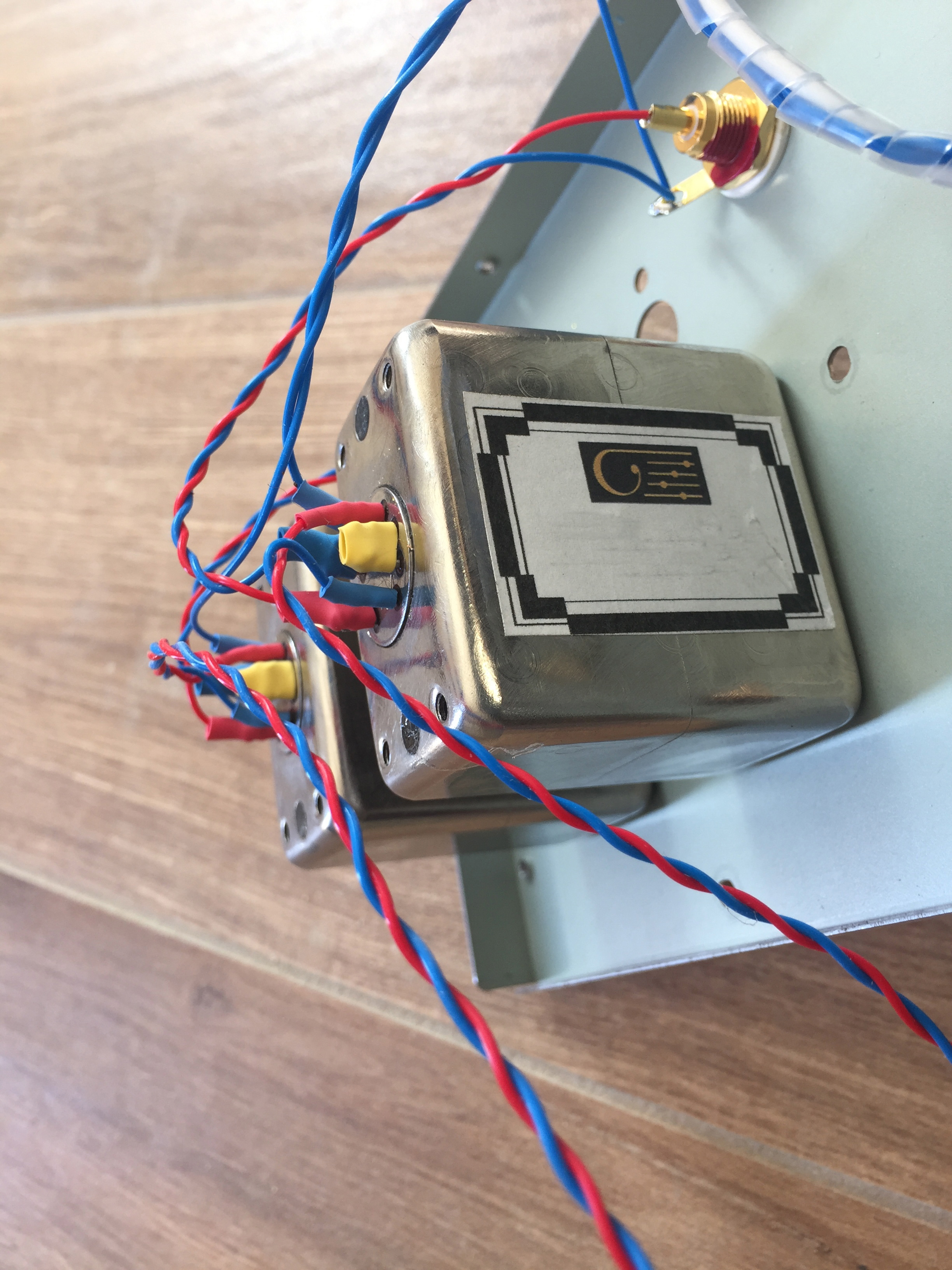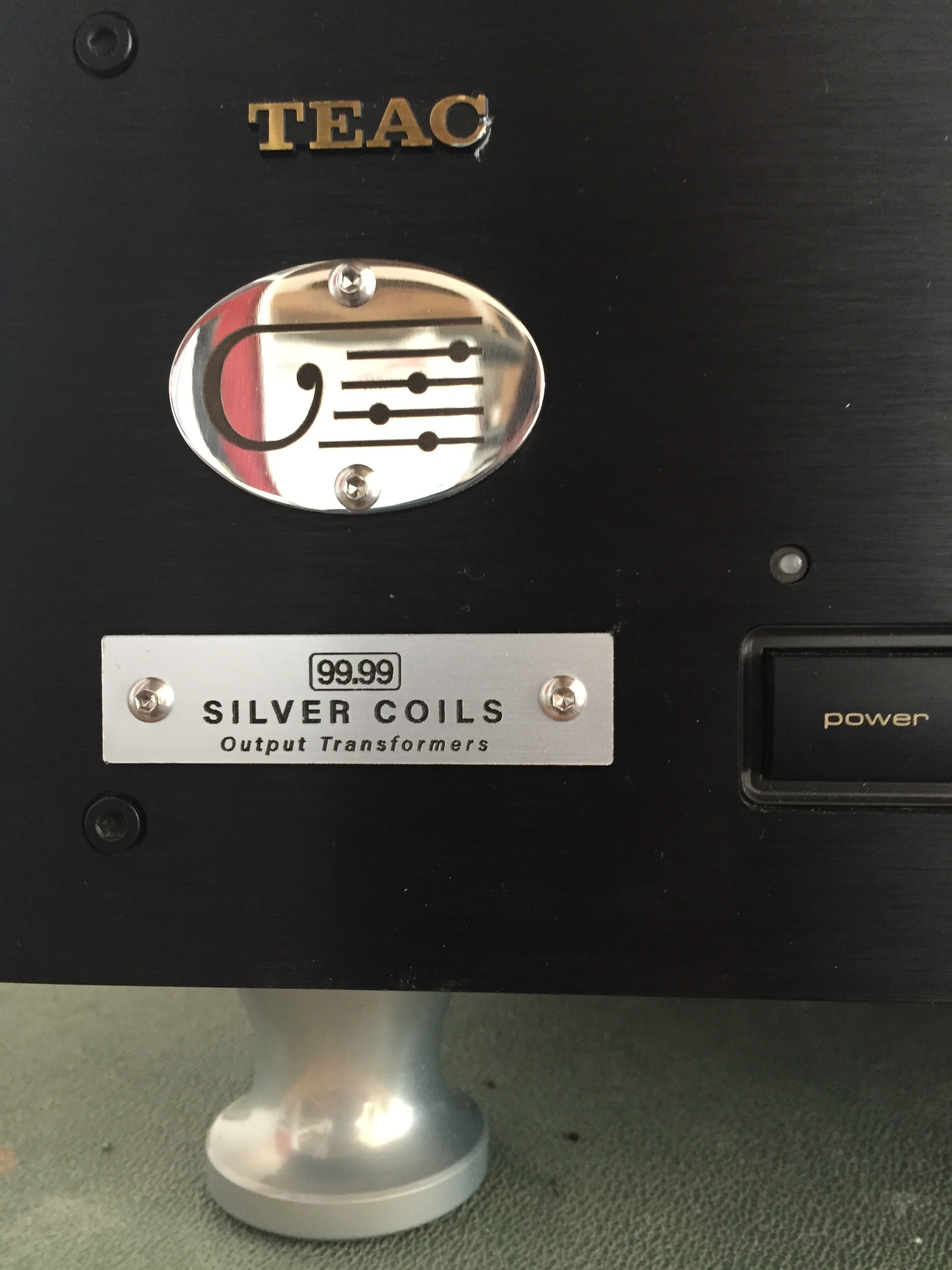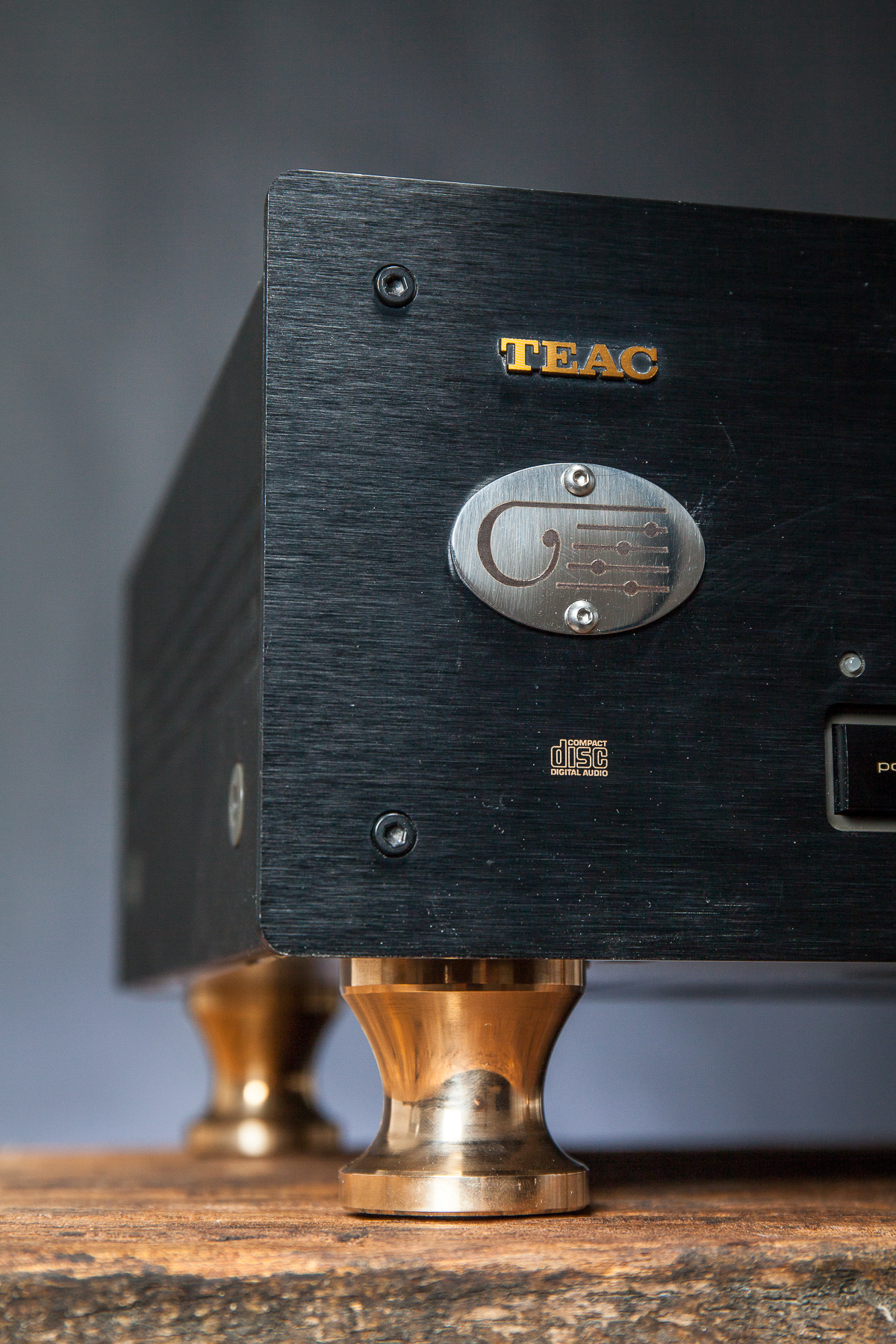Home |
Clinamen | Philosophy | Customer reviews | White paper | Pricing policy | Contact

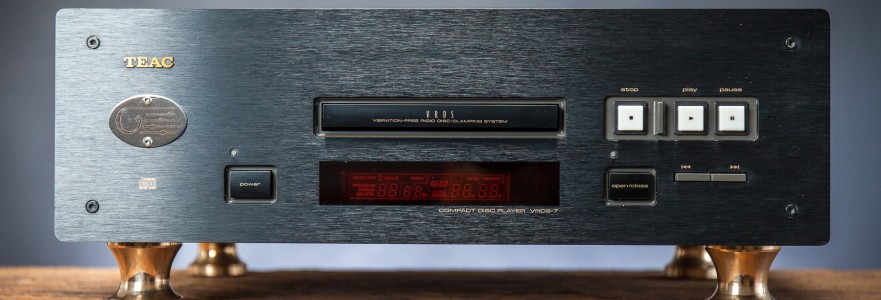
TEAC VRDS 7 CLINAMEN
News:
- Available LC Audio Technology LC Clock X03
- Available Clinamen custom oversize output transformers with hybrid windings Copper/Silver 99.99%
We propose a very interesting upgrade to an integrated CD player, the TEAC VRDS 7. It is a old machine, but we like it because for quality of design and solidity of construction as well as the possibility of radically intervening to eliminate the output stage and replace it with our custom transformers. The PCB aren't SMD, and this is a great benefit for the sound, the chassis is very heavy and give to the CD player a good insensibilty to vibrtion. Furthermore the abbreviation VRDS (Vibration free rigid disc clamping system) identifies the reading mechanism that made TEAC famous; the VRDS system guarantee at the silver disc a stable and vibration-free revolution. In fact, during the reproduction, the stabilizer pad become unied with the silver disc, ensuring is damping.
But why up-grade a CD player? We believe that the race for increasingly converters performance in terms of bit depth and sampling frequency is largely dictated by commercial reasons. If for many sectors of electronics this could be an undoubted advantage, surely, we think that is not true in the audio world. In our opinion, the difference on the sonic plane is made in other parts of the digital machine. The bits and sampling frequency of a banal CD are already excellent in ensuring that they do not constitute the "bottleneck" of the machine's performance.
We can compare the race to the latest generation DACs like the race to the very low distortion in transistor amplifiers of the 80-90s, obtained with very high feedback rates,: which led to declaring incredible instrumental performance, but the sonic performance they were very far from satisfactory.
In our opinion, the real distinction and the real arena to be confronted to make a digital machine, from mediocre to excellent, is fought downstream of the DAC, that is, on the analog output stage.
Secondly, another very important sector resides in the careful attention to the vibrations and the stability in the rotation of the disc, these parameters which directly affect the jiiter and the intervention of the error correction circuit.
Therefore, thanks to our personal certainties, we have identified in the TEAC VRDS 7 a machine with a quality mechanics, well engineered, massive, with internal space to insert our custom transformers, and with the gem of non-SMD printed circuits.
We will now explain in detail the changes made in the VRDS 7 :
First of all the machine is restored and cleaning, checking the kinematic mechanisms of the drawer and the movement of the laser. The laser is checked, and calibrated. Finally, all the parts subject to movement are lubricated with dedicated oils. The drawer opening belt is replaced
The most characteristic up-grade is the implementation of our output stage: it is completely passive and made with custom Clinamen transformers with Vacoperm core shielded in mumetal . The step ratio of the transformes are decreasing, this insures a low output impedance and insensibility to load, the only drawback of this choice is a low output voltage, 0,55 Volt rms instead the standard 2 Volt rms. Of course, the output level is just over 1/4 of the standard output level, this is the only objective criticism. But if we get rid of preconceptions, and understanding that having the pre knob at 9 o'clock is a big disadvantage and not a power reserve, then this disadvantage will turn into an opportunity. Paying the price of a low output, we have as a countervalue a super linear stage, without coloring, without feedback, without active elements that cause distortions and sound compressions.
Furthermore, like many simple solutions, ours is particularly ingenious becuase the filtering of the high frequency spikes in the output of the DAC (SAA 7350) is done by exploiting the parasitic parameters of the transformer, which naturally limit the upward frequency response. This is what we mean by "designing by exploiting the intrinsic capabilities of the components, without external artifices .
So with our passive output stage transformers coupled , two amplification stages realized with OPAMP are eliminated, with incredible sonic benefits. A series of passive elements (resistors and capacitors) are also removed from the PCB board. Following an image of the sockets mounted in place of the OPAMP ones from which the differential signal is taken . The transformer performs the conversion from balanced signal to unbalanced RCA. The only way, according to us, according to the Natural Way of Sound.
The rear panel is CNC machined for housing two new gold RCA input socket, a power AC IEC connector, and a ground connector. We add two series of holes , one for the standard output transformer, and one for the Silver transformer, bigger than the standard. All the internal wiring is made with silvered copper with teflon dielectric.
Another fundamental upgrade consists in the treatment of mechanical vibrations and here we have intervened in a very significant way: we have dampened the printed circuits, in particular in correspondence of the DACs and the large chips, with solid wood of harmonic wood of cocobolo, ebony, bubinga.
In VRDS 7 CD player the upper reinforcement of the mechanics, unfortunately, is not a die-cast element , but simply a plastic cover. We think it is simply useless and indeed harmful, as it is in a really critical point for vibrations. Removing it, space becomes available to apply harmonic wood blocks (cocobolo, Macassar ebony, bubinga, zebrano).
The two motors, one for the disc rotation and one for the lasere movement, is treatement with damping materials.
The CD player is completely dismantled for damping treatement, as you can see in the photos.
New copper shields is added to the inner cables that connected the laser to the digital pcb and the digital pcb to the analog pcb. The cables is damped with teflon tape.
In the following image you can see the cocobolo wood blocks on the chips, on the mechanical reinforcement, the reclock card (it is not the LC Clock X03 that we use instead as standard) and the cable that connects the digital PCB to the analog one, with the new copper shielding and Teflon damping.
Finally we want to focus on ultra large core and silver winding transformers that we make available as up-grade. The silver is 99.99% purity.Their price is high, but the raw material really costs a lot (we have about 35 grams of silver for each transformer). The benefits that can be obtain from they, compared to the standard transformers, however, are such that you can discover things unimaginable by the digital machine. These transformers have about 10 times lower resistance than the standard, this translates into a lower insertion loss, insensitivity to the load (remember that we have a passive output stage, which to have the maximum benefits must have very low losses) and a yield in exceptional microdynamics and macrodynamics. You can see them in the photo below.
Feets are on demand, we reccomended our Clinamenaudio decoupling spring feet.
PRICE , ACCESSORY AND WARRANTLY
- Price of VRDS 7 Clinamenaudio -->2250 euro
- Price if the Teac VRDS 7 is provided by the customer--> 1950 euro
- Price for a new and original laser SONY KSS240A ( including assemly and calibration) -->300 euro
- WARRANTLY : 6 months, starting from the selling data. In the warrantly IS INCLUDED the Laser
EXTRA CHARGE :
- Custom Clinamen 99.99% Silver transformers, Ultra large cores --> 800 euro
- Decoupling spring feets ( 4 pieces) -->280 euro
- Master Clock PCB LC Audio Technology LC Clock X03 )-->450 euro

